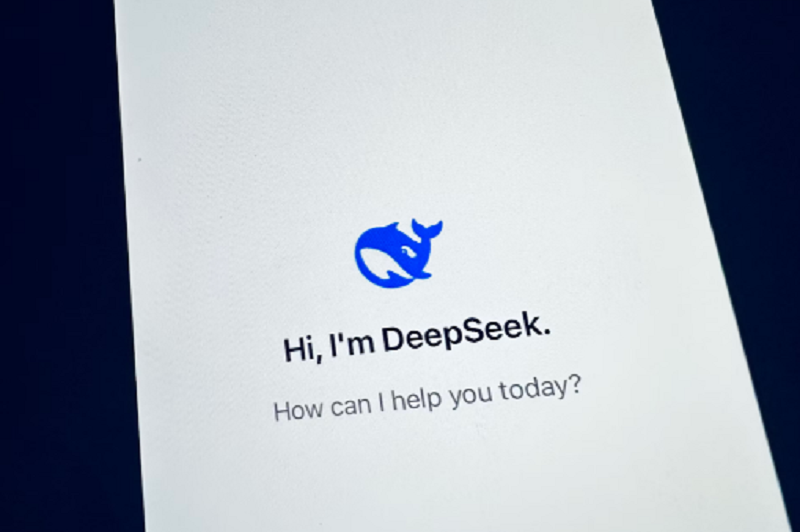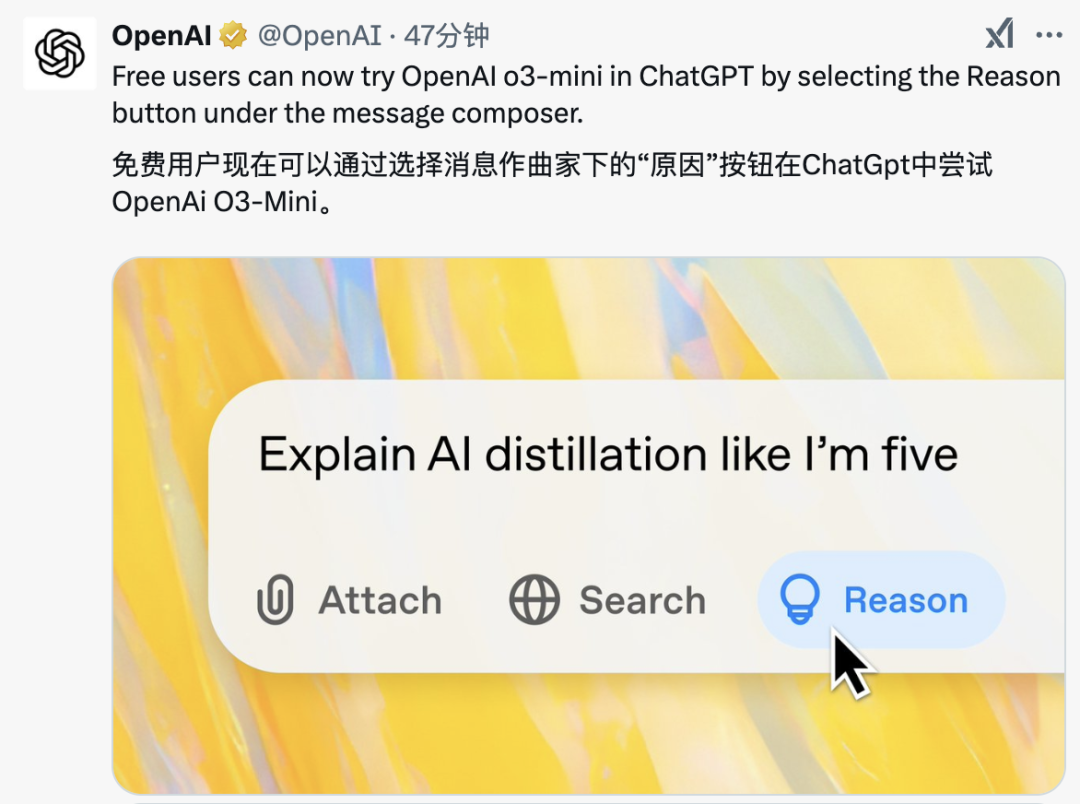DeepSeek: The "Mysterious Oriental Power" Stirring Up the AI Industry
![]() 02/24 2025
02/24 2025
![]() 506
506

This year, DeepSeek has rocked the investment and capital markets with its emergence.
On February 21st, DeepSeek announced on social media platform X that it had assembled a small team to explore AGI (Artificial General Intelligence) and would begin open-sourcing five code libraries the following week, sharing its research progress in complete transparency.
Just the day before, DeepSeek had denied rumors of external financing. Foreign media had previously reported that DeepSeek was considering external funding for the first time to meet increasing demands for computing power. Earlier in February, there were whispers that Alibaba intended to invest $10 billion in DeepSeek for a 10% stake. However, Alibaba Vice President Yan Qiao swiftly debunked these rumors on social media, stating they were false.
In fact, since the start of the year, multiple leading enterprises and investment institutions have reached out to DeepSeek. However, with strong financial support, DeepSeek does not lack funds.
How powerful is DeepSeek? Who stands to benefit from it?
How powerful is DeepSeek?
During the Chinese New Year, DeepSeek released the open-source model DeepSeek-R1, which quickly gained global recognition for its powerful reasoning abilities and exceptional cost-effectiveness. Upon release, it garnered widespread attention from both industry insiders and outsiders.
How popular is DeepSeek? On Apple's App Store, DeepSeek topped the free app chart in China, surpassing generative AI products from American tech giants like ChatGPT, Meta's Threads, Google Gemini, and Microsoft Copilot in the United States. According to statistics, DeepSeek also led the app store download charts in 140 global markets, becoming a highly sought-after product among users worldwide. This ranking attests to the high user market recognition of DeepSeek and its rapid rise and secure position in the global AI market.
Prior to DeepSeek, it was ChatGPT, developed by OpenAI, that stunned the global AI industry. From the release of OpenAI's o1-preview in September 2024 to the present, it has sparked a massive market pursuit, with reasoning models emerging that can match or even surpass its performance.
The primary reason DeepSeek stands out is that it not only led in achieving the effect of the OpenAI o1 model but also compressed the cost of the reasoning model to an extremely low level.
Specifically, the technological breakthrough of DeepSeek-R1 lies in using purely deep learning methods to enable AI to spontaneously develop reasoning abilities. According to the introduction on the DeepSeek official website, DeepSeek-R1 extensively employs reinforcement learning technology in the post-training stage, significantly enhancing the model's reasoning abilities with only a small amount of labeled data. In tasks such as mathematics, coding, and natural language reasoning, its evaluation performance is comparable to that of the GPT-o1 model's official version developed by the American Open AI Research Center (OpenAI). The o1 model achieved true general reasoning abilities for the first time, surpassing human experts in "PhD-level" scientific question-and-answer sessions.
How powerful is DeepSeek R1? Some testers used common collision detection to verify, requiring the large model to write a program that makes a small ball bounce within a slowly rotating geometric shape while keeping the ball inside. Collision detection poses a significant challenge to the model's reasoning abilities, and any slight carelessness can lead to noticeable logistical errors. The test results revealed that R1's performance is significantly better than OpenAI's o1pro mode.
In addition to its powerful performance, another significant advantage of R1 lies in its ultra-high cost-effectiveness. It is understood that the training cost of the DeepSeek-R1 model is only $5.6 million, significantly lower than the hundreds of millions or even billions of dollars invested by American tech giants in AI technology, such as the over $100 million training cost of ChatGPT-4. According to another technical report, the pricing for R1's services for developers is 1-4 yuan per million tokens (input strings), which is only about 1/30 of o1's pricing.
Liang Wenfeng, the founder of DeepSeek, once said in an interview with the media that both APIs and AI should be inclusive and affordable for everyone.
It is worth mentioning that DeepSeek adopts a completely open-source strategy, which, on the one hand, lowers the usage threshold for users and, on the other hand, attracts the attention of many developers and researchers after being open-sourced, further promoting the prosperity of the collaboration ecosystem among AI developer communities and driving the development of AI technology.
Previously, OpenAI also expressed its hope to advance the development of digital intelligence in the way most likely to benefit all humanity, without being constrained by the need to generate financial returns. However, OpenAI's open-source strategy only lasted until before the release of GPT-3, and after the release of GPT-4, it hid its training data and model weights, gradually moving towards closedness.
Jim Fan, a senior research scientist at NVIDIA, said on his personal social media platform, "We are at such a historical moment: a non-American company is continuing OpenAI's original mission - empowering all humanity through truly open-source cutting-edge research."
This "mysterious Oriental power" of DeepSeek has made the secondary market question the competitiveness of the American tech industry. Under this impact, the share price of American chip giant NVIDIA plummeted by 17%.
DeepSeek's parent company, DeepQuest, was founded on July 17, 2023, supported by the renowned quantitative private equity fund HFT Fund. With strong financial backing, it provides solid support for its continuous deep technological exploration without the purpose of profit.
As early as May 7, 2024, DeepQuest released DeepSeek-V2, which also adopted an open-source model. Upon its release, it became the strongest representative of open-source models in Chinese comprehensive abilities (AlignBench) and was listed in the same tier as closed-source models such as GPT-4-Turbo and ERNIE Bot 4.0 in evaluations; its English comprehensive abilities (MT-Bench) were in the same tier as the strongest open-source model LLaMA3-70B, surpassing the strongest MoE open-source model Mixtral8x22B; it ranked high on lists of knowledge, mathematics, reasoning, programming, etc.
In addition, its API price is only 2.7% of GPT-4's, further intensifying the price war among large models in China. In the following week, ByteDance, Alibaba, Baidu, and Tencent announced price reductions successively.
At the end of 2024, DeepSeek-V3 was released, and in areas such as knowledge-based tasks, long text understanding, programming, and mathematical operations, its performance approached or even surpassed international top-tier closed-source models like GPT-4 and Claude-3.5-Sonnet.

DeepSeek's entry directly triggered a chain reaction in the global AI field. In the global market, cloud computing platforms such as Microsoft, NVIDIA, and Amazon have integrated DeepSeek, which has indirectly stimulated OpenAI to launch the OpenAI o3-mini series of models, opening up user access to reasoning models for the first time.
Who has integrated DeepSeek?
Under the wave of DeepSeek, according to incomplete statistics, more than 200 enterprises have announced their integration with DeepSeek, covering various fields such as basic telecommunications, cloud computing, chips, finance, automobiles, and mobile phones. Among them, multiple cloud platforms, including Huawei, Alibaba, Baidu, Tencent, and JD.com, have announced the integration of the DeepSeek large model, and about 20 automobile enterprises have announced the completion of deep integration with DeepSeek in the intelligent cabin scenario or AI operation field. Additionally, multiple securities firms, banks, and public funds have also stated that they have integrated the DeepSeek large model.
In fact, domestic leading enterprises have already made layouts in the strategy of self-developed AI large models. The integration of their main apps with third-party large model services can be seen as a strategic shift for domestic leading enterprises and a bet on their future.
Tencent launched the "AI Search" function based on DeepSeek-R1 in a recent gray-scale test, seen as its strategy to actively embrace AI. It then quickly integrated DeepSeek into products such as Tencent Maps, QQ Music, and Tencent Docs.
Shortly after, Baidu also followed up with DeepSeek. Before announcing the integration of DeepSeek, Baidu had already changed its development path for large models, first announcing free use for all and then changing its closed-source strategy to embrace the open-source route, stating that it would launch the ERNIE Bot 4.5 series and move towards open sourcing.
Among the current major internet enterprises, ByteDance is relatively cautious about embracing and integrating DeepSeek. Currently, only Feishu has officially announced the launch of the DeepSeek series of models on the business side, but the entry is relatively hidden.
It is worth affirming that DeepSeek's open-source ecosystem has greatly accelerated the process of AI scenario landing and promoted the further transformation of the AI industry from hardware facilities to the software application layer. The leading cloud services of major enterprises have integrated DeepSeek due to the unprecedented popularity and extremely low-cost advantages brought by DeepSeek, which is expected to become a breakthrough point to break the market price war and further consolidate their existing market position.
How powerful is DeepSeek? With the explosion of DeepSeek's popularity, a large influx of traffic has accompanied some hacker attacks, causing occasional lags on the DeepSeek official website.
Compared to other large model language products on the market, the difference of DeepSeek on the user side is that it demonstrates a detailed thinking process.
How to effectively use large AI models to make them tools that significantly enhance work efficiency is also a science. Thoughtful netizens have already summarized a set of rules, and becoming the leader of AI will bring some dilemmas similar to those faced by real leaders when using people.
A smart but unproductive DeepSeek, a stupid but diligent Doubao, a medium-level but emotionally unvaluable Kimi, and an overseas-studied ChatGPT that I can't afford.
Some netizens have also carefully summarized that some management skills are needed. First, use the smart DeepSeek to formulate strategies (it can only answer once, so cherish the opportunity), then use the diligent Doubao to fill in the content (it can output countless times, with unlimited use), and Kimi can be used for horse racing, comparing and selecting the better option between Kimi's and Doubao's plans. For information involving overseas, ChatGPT can be used to check again.
However, it is worth noting that these AIs can all deceive you if you don't carefully distinguish between them and can be deceived in minutes.
Application level
DeepSeek's profits and hidden concerns
With the explosion of DeepSeek's popularity, some people have already made money.
On social media platforms, people share how ordinary individuals can engage in side hustles and start self-media businesses to collect tuition fees through DeepSeek, using common phrases such as "low-threshold entrepreneurship," "easy to create hits," and "the biggest cash-in trend in 2025."
One blogger stated that the relevant community attracted 4,000 paid members in four days, generating nearly 200,000 yuan in revenue.
The topic #deepseek on Xiaohongshu has a view count of 820 million and a discussion volume of 5.263 million; on Douyin, the topic #deepseek has a play count of 11.46 billion.

A Yiwu businesswoman uses DeepSeek + AI to do cross-border business, only needing to say "12345" into the camera to generate videos in dozens of languages.
Some netizens have won lotteries by following DeepSeek's advice, while others have tried to calculate their fortune for the next year through it.
Xiaohongshu user @Yapie Programmer Brother used DeepSeek to create the song "Seven-Day Lover," which became a hit on NetEase Cloud Music. From February 11th to 17th at 00:00, the song had 186,000 effective plays, 9,555 favorites, and 1,769 comments. This song also brought him an average daily income of 150 yuan.
It is worth mentioning that with the explosion of DeepSeek's popularity, some risks and challenges have already emerged.
On the one hand, there are risks of data leakage, as cyberattacks may lead to the theft of DeepSeek's user data and technical data. Once data is leaked, it will not only damage users' interests but also expose DeepSeek to legal liability and reputational damage, and may even be exploited by competitors to gain commercial benefits.
Moreover, as a startup AI company, DeepSeek faces the risk of its internal talents being poached by domestic giants such as Alibaba, Baidu, and Tencent, as well as by American Silicon Valley giants.
Furthermore, there is pressure from the US government, which has launched an investigation into DeepSeek on the pretext of "national security," underlying its attempt to maintain its hegemony in the AI field. In the future, more policy restrictions may be imposed on DeepSeek, and it may even be jointly suppressed by the US in collaboration with other countries, limiting its development in the global market.
Most importantly, despite the booming development of large AI models to date, there is still no prospect of large-scale commercialization. Amid the price war, how to recover the hundreds of millions of R&D costs remains to be seen.








